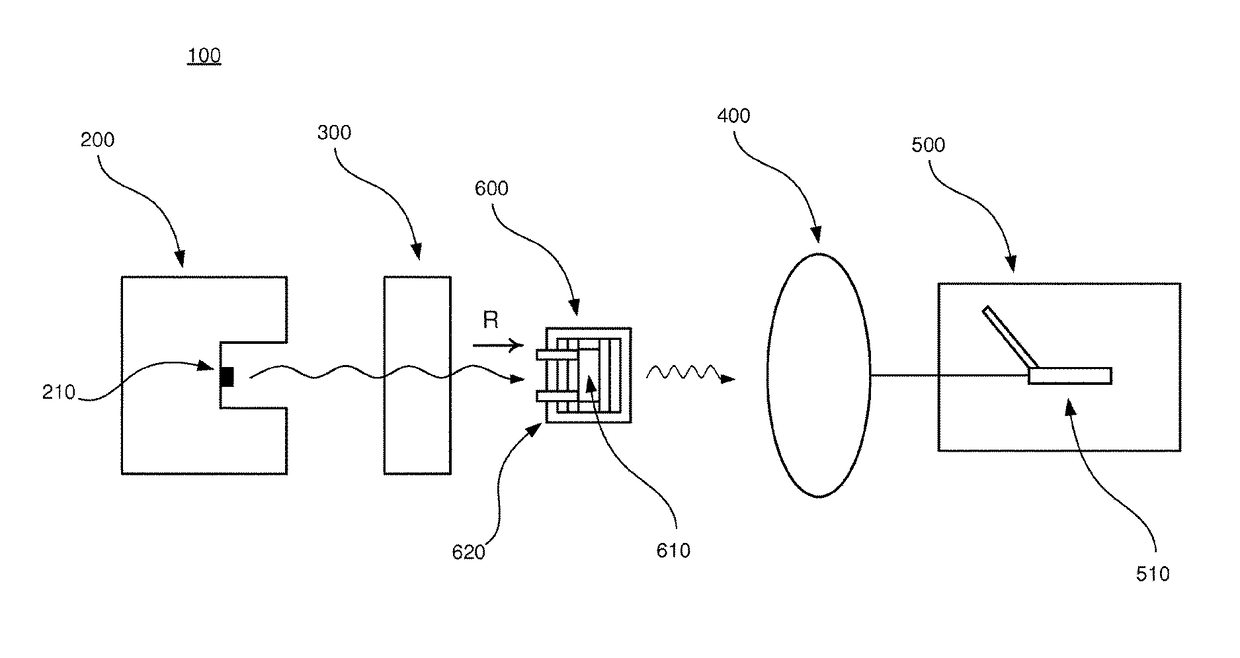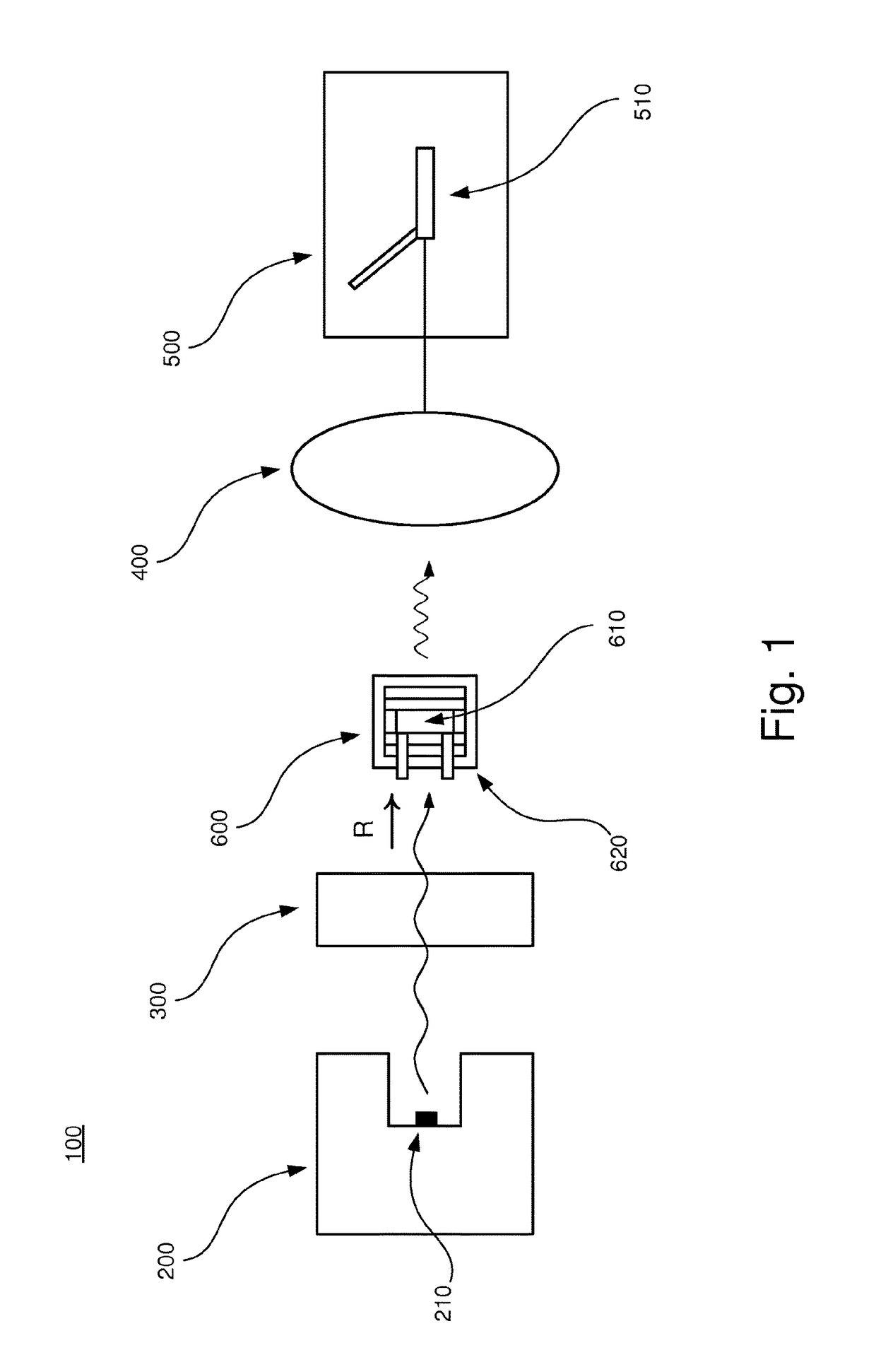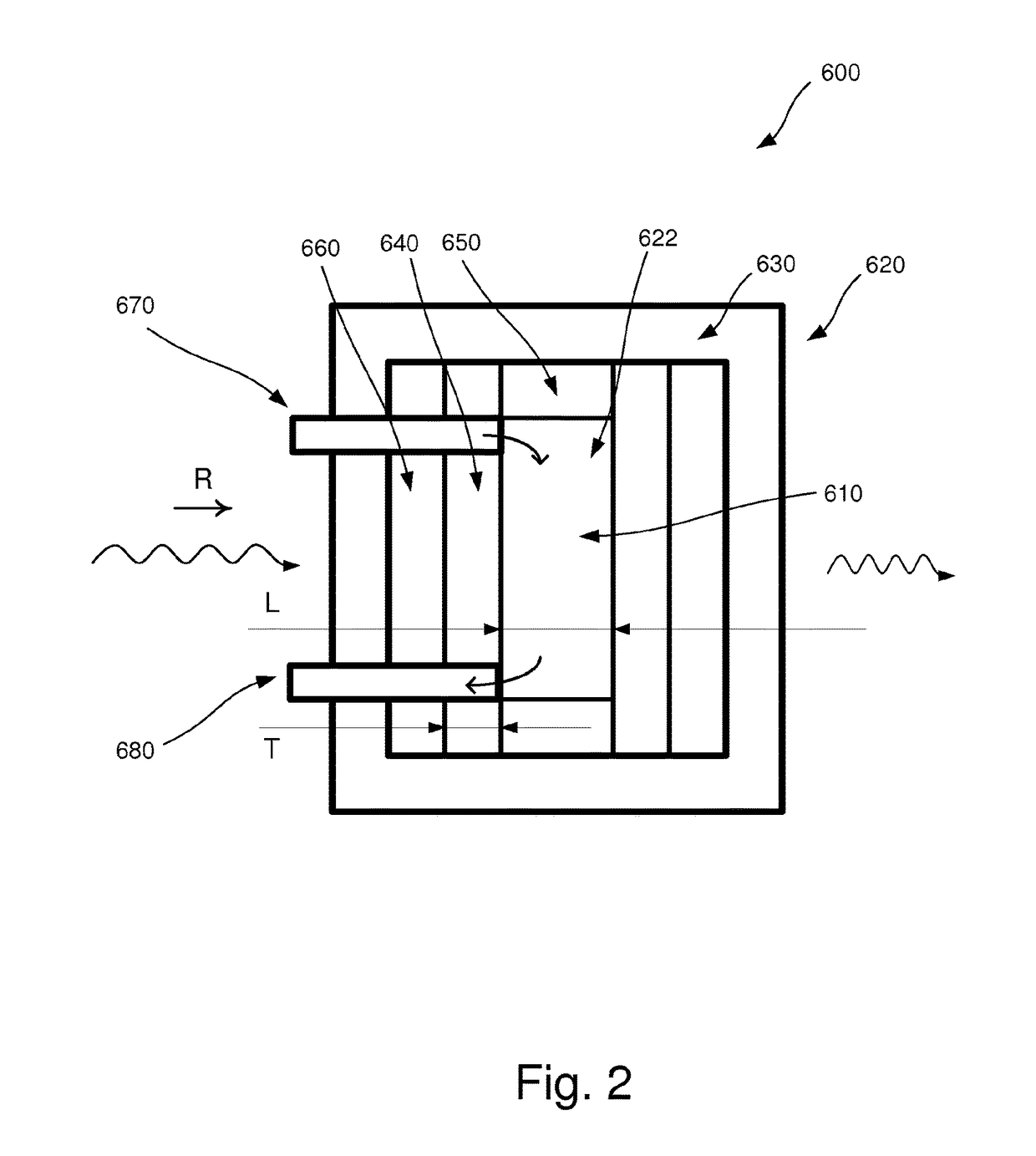Method of and apparatus for correcting for intensity deviations in a spectrometer
a technology of intensity deviation and intensity correction, applied in the field of calibrating a spectrometer, can solve the problems of unstable calibration, tedious and time-consuming task,
- Summary
- Abstract
- Description
- Claims
- Application Information
AI Technical Summary
Benefits of technology
Problems solved by technology
Method used
Image
Examples
Embodiment Construction
[0040]In the following, an embodiment of the inventive apparatus 100 will be described with reference to FIGS. 1 and 2 in the context of absorption spectroscopy. The apparatus 100 comprises a radiation device 200, an interferometric arrangement 300, a detector 400 and a measuring device 500. Also, a sample arrangement 600 to be analyzed is arranged to be placed in the apparatus 100.
[0041]The radiation device 200 comprises a radiation source 210 which is arranged to emit polychromatic infrared radiation in the direction as indicated by the letter R in FIGS. 1 and 2.
[0042]The interferometric arrangement 300 comprises necessary equipment for implementing Fourier transform spectroscopy, as is well-known to a person skilled in the art. For example, the interferometric arrangement 300 comprises a collimator which collimates the infrared radiation and additional equipment comprised in an interferometer, e.g optical components such as mirrors and lenses.
[0043]The detector 400 is arranged to...
PUM
| Property | Measurement | Unit |
|---|---|---|
| wavelengths | aaaaa | aaaaa |
| wavenumbers | aaaaa | aaaaa |
| wavelengths | aaaaa | aaaaa |
Abstract
Description
Claims
Application Information
 Login to View More
Login to View More - R&D
- Intellectual Property
- Life Sciences
- Materials
- Tech Scout
- Unparalleled Data Quality
- Higher Quality Content
- 60% Fewer Hallucinations
Browse by: Latest US Patents, China's latest patents, Technical Efficacy Thesaurus, Application Domain, Technology Topic, Popular Technical Reports.
© 2025 PatSnap. All rights reserved.Legal|Privacy policy|Modern Slavery Act Transparency Statement|Sitemap|About US| Contact US: help@patsnap.com



